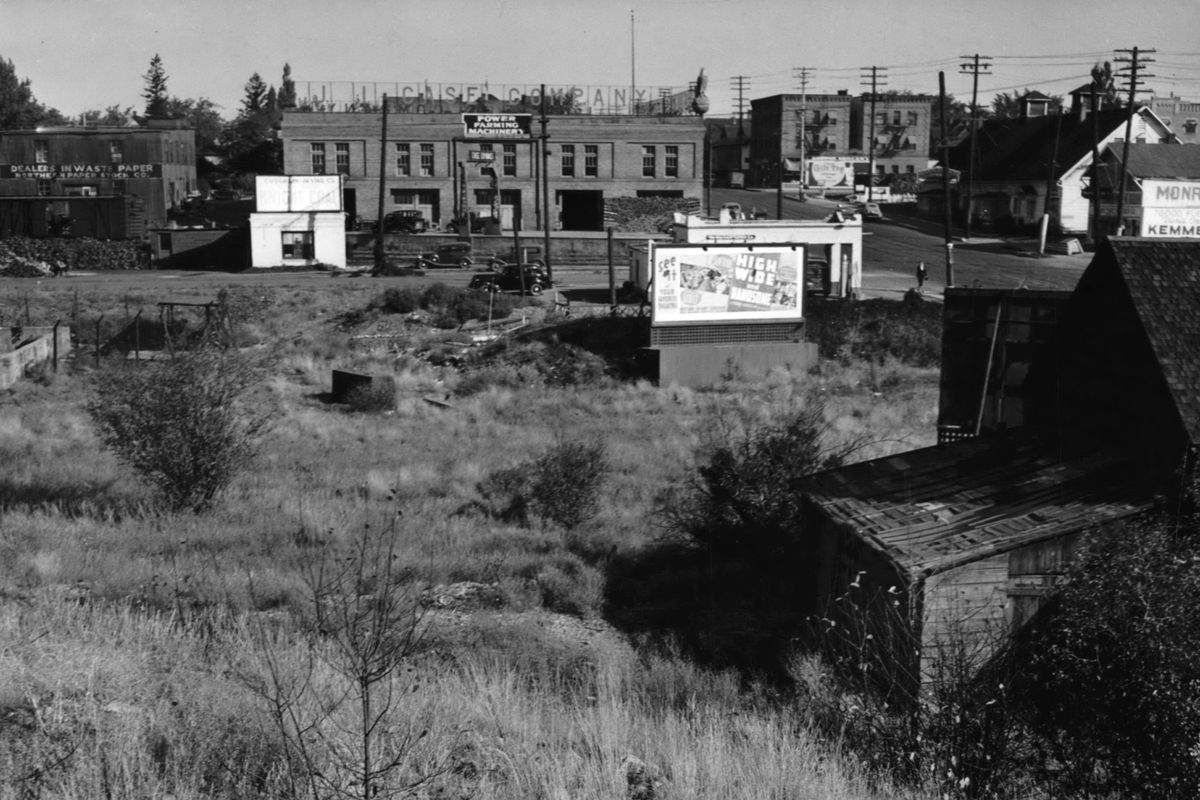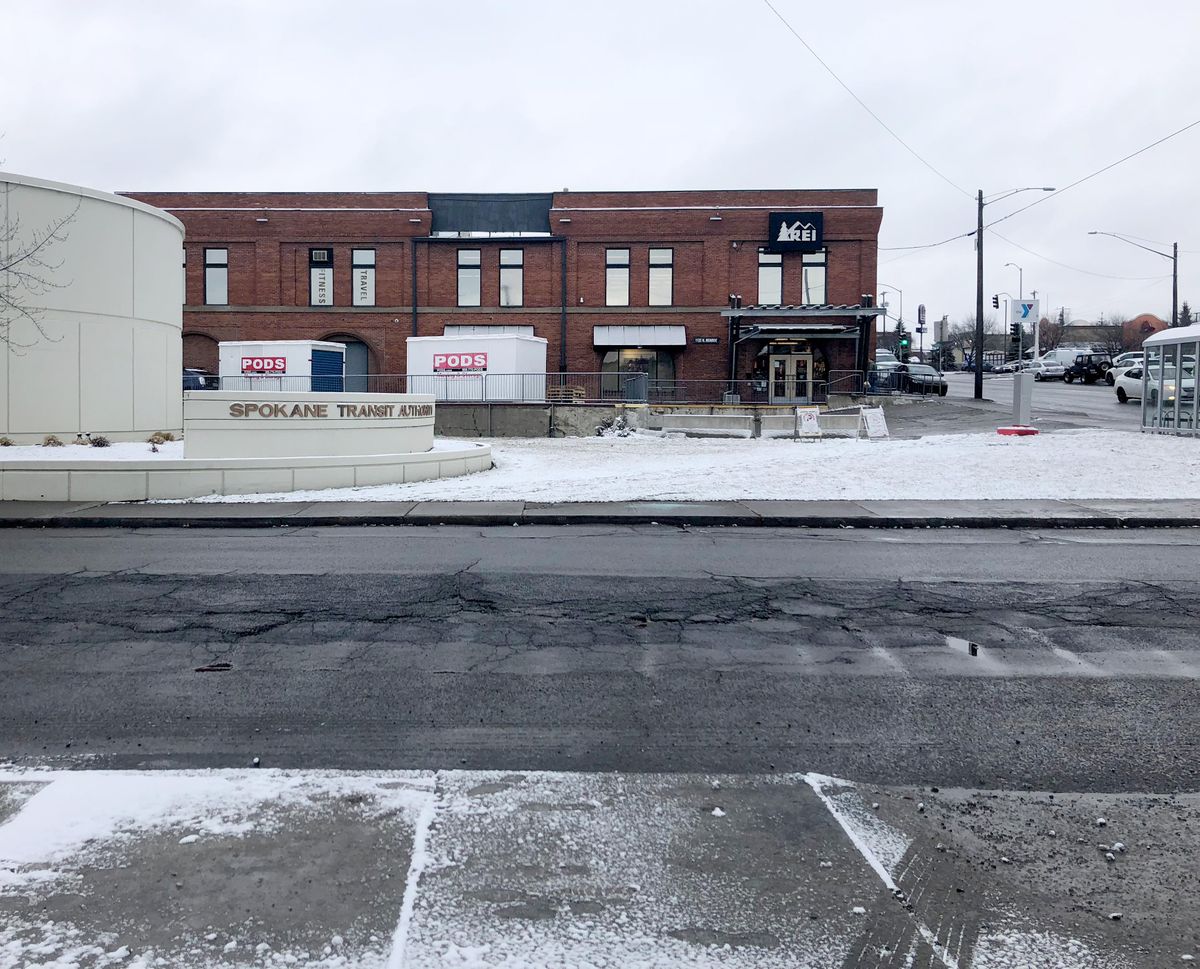Then and Now: J.I. Case building
The J.I. Case Company dealership, seen here at the top of this 1941 photo, was built in 1909, and the business stayed in the building until 1967. The two-story building housed Import Market from 1967 until 1986, then became a Recreational Equipment Inc. store, which it remains today. REI, founded in Seattle in 1938, is a leader in outdoor recreational gear. (The Spokesman-Review Photo Archive / SR)
The J.I. Case Threshing Machine Co. bought the lot on the southwest corner of Boone Avenue and Monroe Street in 1909 for $40,000 and built a new brick warehouse with a loading dock along the railroad tracks that bisected the block diagonally.
Case, known mostly for their steam engines and related implements in the late 19th and early 20th centuries, moved from a leased warehouse in downtown Spokane to their new building at 1125 N. Monroe St. that year. It was big business news that Case took their business from the Northern Pacific railroad to the Oregon Railroad & Navigation Co., whose tracks ran behind the new building. The OR&N was an arm of the Union Pacific railroad.
Jerome Increase Case, born in 1819, founded his company in Racine, Wisconsin, in 1842 to build threshing machines for farmers. The first Case steam engine came out in 1869 and the first tractors in the 1870s.
Throughout the 20th century, Case became one of America’s top manufacturers of farming equipment, battling John Deere and Ford for market share. After Case died in 1891, the company went through many changes. The company’s first equipment with gas engines came out in 1895, but they continued making steam tractors until 1927. The Case 150-horsepower steam tractor was the largest tractor in its day at 14 feet tall, 15 feet wide and 28 feet long. None of the original 150 models survived, but a South Dakota engineer re-created one and debuted the 75,000-pound giant in 2018.
Case became part of the International Harvester Co. in 1902, but kept the brand name. Case manufactured conventional automobiles from 1908 to 1927.
In the 1950s, construction equipment became the focus of the company, with agriculture second. Later, Case became Case IH.
In 1967, the Spokane Case dealership moved out to the West Plains and the old building at 1125 North Monroe St. was filled by Import Market, which sold imported housewares, clothing and gift items.
In 1938, a group of mountain climbers in Seattle formed a buying co-op they called Recreational Equipment Incorporated. In 1986, REI opened a 30,000 square foot store in the 1909 Case building.

